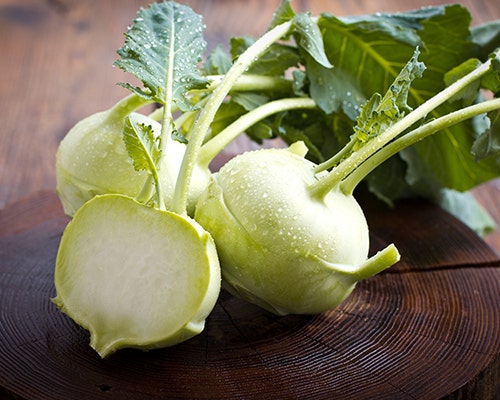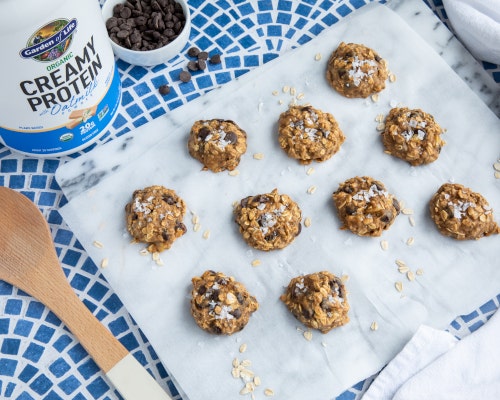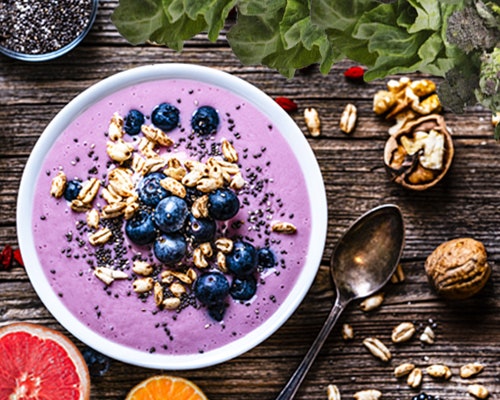Kohlrabi – Why I am a Fan
- 7/3/19

by David Perlmutter, M.D., Board-Certified Neurologist, #1 New York Times Best-Selling Author, Fellow of the American College of Nutrition
My wife and I were recently at a restaurant and in reviewing the potential vegetable side dishes we noticed that kohlrabi was listed. Truth be known, neither of us was fully versed in kohlrabi so we did what anyone would do, we googled it. And what we discovered was that kohlrabi is really a terrific vegetable.
Like broccoli, cauliflower, kale, Brussels sprouts, and cabbage, kohlrabi is a member of the brassica family, and as such, it shares in the extensive health providing properties of this group. It’s a really low in sugar, containing only 2.6 g of sugar in a serving. That said, this same serving will provide 3.6 g of dietary fiber and 75% of the daily requirement for vitamin C.
So, we went ahead and ordered the kohlrabi, and it was delicious. Our side dish was chopped and baked and looked a lot like potatoes. It was crunchy in a way that fiber rich vegetables are, and much less starchy tasting, at least in comparison to potatoes. And while our baked kohlrabi was awesome, we subsequently learned a lot more about how you can prepare and eat kohlrabi.
It can be served raw with olive oil and salt, added to a salad like other root vegetables, puréed and used in making soup, or steamed. There are even recipes available to use kohlrabi along with cauliflower to make a healthy substitution for mashed potatoes.
But I have to admit that I am most excited about making slaw using kohlrabi along with cabbage, carrots, onion, cilantro, vinegar, salt, and homemade mayonnaise made with olive oil, egg yolks (organic, free-range), lemon juice and vinegar.
It’s great to discover new foods, especially when they are really good for you. I am sure that many of you have been eating kohlrabi for a long time, so we are clearly not early adopters. But life is for learning!
My wife and I were recently at a restaurant and in reviewing the potential vegetable side dishes we noticed that kohlrabi was listed. Truth be known, neither of us was fully versed in kohlrabi so we did what anyone would do, we googled it. And what we discovered was that kohlrabi is really a terrific vegetable.
Like broccoli, cauliflower, kale, Brussels sprouts, and cabbage, kohlrabi is a member of the brassica family, and as such, it shares in the extensive health providing properties of this group. It’s a really low in sugar, containing only 2.6 g of sugar in a serving. That said, this same serving will provide 3.6 g of dietary fiber and 75% of the daily requirement for vitamin C.
So, we went ahead and ordered the kohlrabi, and it was delicious. Our side dish was chopped and baked and looked a lot like potatoes. It was crunchy in a way that fiber rich vegetables are, and much less starchy tasting, at least in comparison to potatoes. And while our baked kohlrabi was awesome, we subsequently learned a lot more about how you can prepare and eat kohlrabi.
It can be served raw with olive oil and salt, added to a salad like other root vegetables, puréed and used in making soup, or steamed. There are even recipes available to use kohlrabi along with cauliflower to make a healthy substitution for mashed potatoes.
But I have to admit that I am most excited about making slaw using kohlrabi along with cabbage, carrots, onion, cilantro, vinegar, salt, and homemade mayonnaise made with olive oil, egg yolks (organic, free-range), lemon juice and vinegar.
It’s great to discover new foods, especially when they are really good for you. I am sure that many of you have been eating kohlrabi for a long time, so we are clearly not early adopters. But life is for learning!





